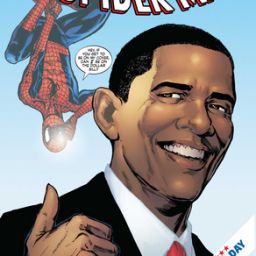Ignoring cultural context has led to some incredibly bizarre cease-and-desist notices recently. Yet intellectual property and culture are tied together. New works are not created Zeus-like bursting forth Athena-style ahistorically with no need for citation or attribution.
In a recent post on the University of Chicago Faculty Blog discussing the need for social and cultural theory in analyzing intellectual property, Madhavi Sunder quotes Henry Jenkins in Convergence Culture, that it is a
“paradoxical result” where “works that are hostile to the original creators” have “greater freedom from copyright enforcement than works that embrace the ideas behind the original work and simply seek to extend them in new directions.” (190)
While technically this is true in the American context, considering that fair use more carefully covers parody than homage, the new non-human computerized “catch-a-copyright-tiger (read pirate!)” lumps all uses together, whether it is one or a combo of:
fair use, parody, satire, homage, send-up, take-off, quoting, remix, mashup, sampling, fanmade, or any other arguably legal use here.
So what does this mean in real life?
Laurence Lessig’s video above has been blocked by YouTube — it is available here from another video service. And why?
“Your video, Part 2: Lawrence Lessig – Getting a Network the World Needs at OFC/NFOEC 2009, may have audio content from Mahna Mahna by The Muppets featuring Mahna Mahna & The Two Snowths that is owned or licensed by WMG.”
Avatar

According to Glockgal:
All but one of the products on my racebending.com Zazzle store has been removed because “it contained content in violation of Viacom’s intellectual property rights”. This means not just images (all of which were drawn by me), but also WORDS.
Apparently a t-shirt saying ‘Aang can stay Asian and still save the world’ is a copyright violation
The Organization for Transformative Works blogged that the removed items included
“The Last Airbender: Putting the Cauc back in Asian” or “The Last Airbender: Brown/Asian/Colored Actors NEED NOT APPLY”. These design were entirely textual, and obviously political: Glockgal called her store Racebending.com and contextualized its products as a form of political activism: “Stop Hollywood White-Washing of the upcoming movie The Last Airbender!” … since when does [any company] own political speech about its products?
While this story has a successful end, why should preemptive removal be the way that corporate entities react? Because the law is written in a way that fair use is a postaction shield rather than as an anticipatory safeguard — even when the use is culturally significant.
Self-pwnage
But perhaps the best example of why the default should be changed to assumed fair use is self-pwnage — where a company can say “use away!” and “not OK” at the same time.
Recently, Fox had a YouTube user’s account suspended for participating
in a Burger King-sponsored mashup promotion on YouTube, where users were encouraged to use a web-based voiceover-creation tool to dub over videos from Seth MacFarlane’s Google-distributed Cavalcade of Cartoon Comedy series.
This isn’t new. Back in 2006, pre the word self -pwnage, though Cartoon Network’s New Media Department decided to place information on YouTube to help fans create their own commercials, the legal department sent out cease and desist letters. In an important moment of honesty, Molly Chase, Executive Producer of the New Media Department said, “Putting the content out there consciously is something we want to do, but we have to communicate that very well internally.” If corporations can’t even figure out what their position is on fan use, why should fans or the public be the ones that pay? Or to determine the outside limits of fair use?
Sunder says that
Culture is the sphere in which individuals create meaning, share ideas and enjoy life with others. Furthermore, culture plays an increasingly important role in promoting freedom in the social, political, and economic spheres of life. Cultural approaches to intellectual property law ought to recognize these interconnections.




